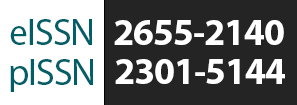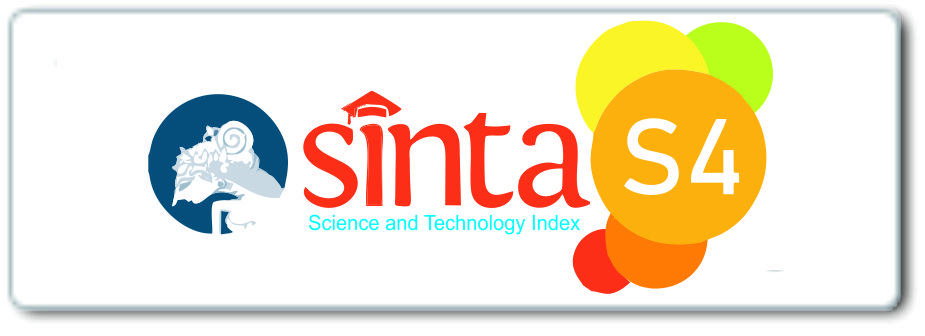Motion Graphic Dalam Mendukung Penyampaian Pesan Game Show Edukasi “Clash Of Champions”
DOI:
https://doi.org/10.34010/visualita.v13i1.13664Keywords:
motion, graphic, message, clash, championAbstract
Motion graphics have functions that allow messages to be delivered efficiently and attractively to the audience. "Clash of Champions" is an educational game show that applies motion graphics throughout the video so that the message can be delivered well. This study was conducted to discuss the application of the function of motion graphics in supporting message delivery in "Clash of Champions". The method used is qualitative with a purposive sampling approach. The theory used is the motion graphic theory proposed by Austin Shaw. From the research that has been done, it is concluded that there are motion graphics in the form of infographics, kinetic typography, and characters. Infographics describe the profiles of participants, situations, games, and results throughout the video. Kinetic typography gives a "technological" feel to the text display. Character-based motion graphics are used to show the figure of the tutor who delivers important information at the event. Thus, the application of motion graphics in "Clash of Champions" can provide information efficiently so that the videos displayed are informative, persuasive, and inspiring for the audience.
Downloads
References
Abdussamad, Z. (2021). Metode Penelitian Kualitatif (P. Rapanna, Ed.).
Amali, L. N., Zees, N., & Suhada, S. (2020). Motion graphic animation video as alternative learning media. Jambura Journal of Informatics, 2(1), 23–30.
Margery, F., & Saputra, G. (2023). PERANCANGAN MOTION GRAPHIC SEBAGAI MEDIA PROMOSI ALTERNATIF MUSEUM BAHARI JAKARTA. Titik Imaji, 6(1).
Melati, E., Fayola, A. D., Hita, I. P. A. D., Saputra, A. M. A., Zamzami, Z., & Ninasari, A. (2023). Pemanfaatan animasi sebagai media pembelajaran berbasis teknologi untuk meningkatkan motivasi belajar. Journal on Education, 6(1), 732–741.
Murdiyanto, E. (2020). PENELITIAN KUALITATIF (1st ed.).
Nadya, N. (2021). ANALISA VISUAL DESAIN KARAKTER SERIAL ANIMASI “KUKU ROCK YOU.” Titik Imaji, 4(1).
Nadya, N. (2024). Peranan Konsep Latar Dan Efek Visual dengan Pendekatan Metode Proses Produksi Animasi pada Film" Dahulu Kala". Titik Imaji, 7(1).
Nastiti, M. D., Mustaziri, & Tompunu, A. N. (2021). Animasi 2D (Motion Graphic) Sebagai Media Pembelajaran Mata Kuliah Etika Profesi. Jurnal EL Sains, 3(1), 37–42.
Prasetyo, M. E. (2024). PERANCANGAN VIDEO INFORMATIF MOTION GRAPHIC TENTANG PEMBATASAN EMISI KARBON DAN PENGGUNAAN KENDARAAN LISTRIK. Titik Imaji, 7(1).
Romadonah, E. S., & Maharani, I. N. (2019). Motions graphic sebagai media pembelajaran. Jurnal Utile, 5(2), 115–122.
Rosalia, R., & Hidajat, H. (2022). PERANCANGAN VIDEO MOTION GRAPHIC SEBAGAI MEDIA PROMOSI" INTERLAC PROBIOTIC" SUPLEMEN ANAK. Titik Imaji, 5(1).
Rukmana, E. N., Samson, C. M. S., & Kusnandar, K. (2021). Penelitian Permainan Rakyat: Konten Analisis (Content Analysis) Pada Website Garuda RISTEK-BRIN. Pustakaloka, 13(2), 315.
Saatcı, G. (2020). The Role of Local Festivals from The Brochure Layout Perspectives in Creating a Destination Image: A Content Analysis Research. Yaşar Üniversitesi E-Dergisi, 15(57), 24–37. https://doi.org/10.19168/jyasar.558977
Samodra, F. P. (2024, June 30). Mengenal Peserta Clash of Champions, University War Versi Indonesia. Liputan 6.
Sandi, S. (2021). Pemanfaatan Film Animasi Sebagai Media Pembelajaran Anak Berbasis Flashmx. Jurnal Khatulistiwa Informatika, 12(2), 144–151.
Sanjaya, W. (2023a). PENGGAMBARAN KENANGAN DAN KESEDIHAN MELALUI KOMPOSISI SINEMATOGRAFI PADA VIDEO MUSIK PESAN TERAKHIR. CALACCITRA: JURNAL FILM DAN TELEVISI, 3(2).
Sanjaya, W. (2023b). VISUAL COMPOSITION IN BUILDING DRAMATIZATION OF SONG LYRICS IN THE MUSIC VIDEO “MELAWAN RESTU”: KOMPOSISI VISUAL DALAM MEMBANGUN DRAMATISASI LIRIK LAGU PADA VIDEO MUSIK “MELAWAN RESTU.” VCD, 8(2).
Sanjaya, W. (2024). Analisis Match Cut dalam Membangun Penceritaan dalam Film Everything Everywhere All at Once. Rekam: Jurnal Fotografi, Televisi, Animasi, 20(1), 1–22.
Sanjaya, W., & Marian, H. (2023). Relasi Kepercayaan Diri pada Karakter Utama dengan Komposisi Visual di Film “TAR.” Jurnal Seni Nasional Cikini, 9(02).
Saragih, E. M., & Sirait, S. (2023). Pengaruh Penggunaan Media Animasi Berbasis Plotagon untuk Meningkatkan Hasil Belajar Siswa. Jurnal Pendidikan MIPA, 13(4), 1005–1011.
Sarahdibba, T. U. Y. (2017). Perancangan Animasi Motion Grafis sebagai Media Pengenalan Budaya dan Kesenian Wayang Golek. Jurnal Sketsa, 4(1), 63–70.
Shanti, H. D., & Zulaikha, S. (2024, July 4). Ruangguru adu kempetensi mahasiswa lewat Clash of Champions 2024. Antara.
Shaw, A. (2019). Design for Motion: Fundamentals and Techniques of Motion Design.
Tanaya, I. G. F., & Putra, A. D. (2023). PERANCANGAN DAN PEMBUATAN ANIMASI MOTION GRAPHIC SEBAGAI MEDIA PROMOSI PADA JASA PENGIRIMAN BARANG KAFILA EXPRESS CARGO JOGJA. Jurnal Teknologi Informasi Dan Komputer, 9(5).
Wijanarko, A. (2020). Implementasi Prinsip Animasi Straight Ahead Action pada Karakter Hewan Berbasis Animasi 2D. JAMI: Jurnal Ahli Muda Indonesia, 1(1), 73–84.
Yudhana, B. D., & Gunawan, O. A. (2023). Peran Motion Graphic Pada Animasi Kok Bisa Sebagai Media Komunikasi Visual. Nivedana: Jurnal Komunikasi Dan Bahasa, 4(1), 204–211.
Downloads
Published
Issue
Section
License
Authors who publish with Visualita agree to the following terms:
- Authors retain copyright and grant the journal right of first publication with the work simultaneously licensed under a Creative Commons Attribution-NonCommercial 4.0 International License.
- Authors are able to enter into separate, additional contractual arrangements for the non-exclusive public distribution and display of the journal's published version of the work (e.g., post it to an institutional repository or publish it in a book), with an acknowledgement of its initial publication in this journal.
- Authors wishing to include items (such as images or other media, or any creative works of others whether previously published or not) must contact the original copyright holder to obtain explicit permission to publish these items in Visualital. Writing permission should include: the title(s) of any copyrighted work, original place of publication if applicable, and an acknowledgement of having read Visualita copyright notice. Authors are responsible for obtaining this permission and keeping it in their own records for later verification.






